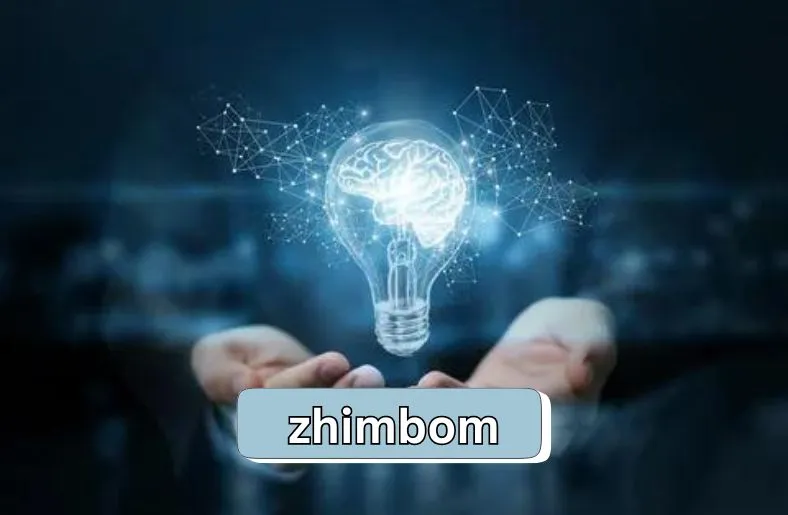Introduction
Mizukando is a unique tradition with deep cultural roots, offering a glimpse into its rich heritage. This blog post will introduce Mizukando and its significance, setting the stage for a detailed exploration of its history and modern relevance. Understanding Mizukando helps us appreciate how traditions shape cultural identities and influence daily life.
We will uncover Mizukando’s origins, its role in cultural practices, and how it has evolved over time. This exploration will reveal why Mizukando remains a vibrant and relevant aspect of cultural heritage today. Through this journey, we aim to highlight the importance of preserving and celebrating such traditions.
Join us as we dive into the essence of Mizukando, discovering what makes it a cherished part of cultural history and how it continues to impact communities. This introduction will provide a foundation for a deeper understanding of its unique characteristics and ongoing significance.
What is Mizukando?
Mizukando is a traditional practice that blends ancient customs with spiritual beliefs. At its heart, it represents a connection to historical values and rituals passed down through generations. Understanding Mizukando involves exploring its core elements and how they reflect cultural and spiritual heritage.
Historically, Mizukando began as a localized tradition, deeply tied to seasonal and agricultural cycles. It evolved over time, incorporating new practices while retaining its essential principles. This evolution highlights Mizukando’s adaptability and enduring relevance in various cultural contexts.
The practice of Mizukando includes specific rituals and ceremonies that symbolize its historical and spiritual significance. These elements are crucial for understanding its role in cultural life and how it has been preserved and adapted through the ages. By exploring these aspects, we gain insight into Mizukando’s unique place in cultural traditions.
Historical Background of Mizukando
Mizukando’s origins date back to early civilizations, where it played a key role in local spiritual and practical life. Initially, it was a way to honor deities and nature, reflecting the community’s relationship with the environment. As societies developed, Mizukando evolved, incorporating new elements while maintaining its core principles.
Significant milestones in Mizukando’s history include its spread across different regions and its interaction with other cultural practices. Key figures and events shaped its development, contributing to its rich historical tapestry. Historical documents and oral traditions offer valuable insights into these periods, showcasing how Mizukando influenced and was influenced by broader historical contexts.
Mizukando’s historical evolution reveals its capacity to adapt while preserving its foundational beliefs. This adaptability has allowed it to remain relevant over centuries, reflecting changes in society while retaining its core values. Understanding this historical background helps us appreciate Mizukando’s enduring significance and its role in shaping cultural heritage.
Cultural Significance of Mizukando
Mizukando holds a prominent place in cultural practices, marking important events and celebrations. It is more than a tradition; it is a symbol of cultural identity and continuity. The rituals associated with Mizukando are integral to community life, reflecting shared values and collective memory.
In many regions, Mizukando influences local festivals and ceremonies, blending with other traditions to create vibrant cultural expressions. Its impact extends beyond festivals, affecting daily life and social interactions. Participating in Mizukando helps individuals connect with their heritage and strengthen community bonds.
The cultural significance of Mizukando lies in its ability to adapt to contemporary contexts while preserving its traditional roots. Despite societal changes, Mizukando remains a living tradition, reflecting both historical values and modern relevance. This adaptability ensures that Mizukando continues to be a meaningful part of cultural heritage.
Mizukando in Modern Times
In contemporary times, Mizukando has evolved significantly, reflecting broader social and cultural shifts. While retaining its traditional elements, it has adapted to modern practices and technologies, making it relevant to today’s audiences. This evolution demonstrates Mizukando’s ability to blend tradition with modernity.
Today, it is practiced in various forms, from traditional ceremonies to modern interpretations. Its relevance is maintained as it resonates with new generations seeking to connect with their cultural heritage. Modern adaptations often incorporate current trends, ensuring that it remains accessible and meaningful.
Despite these changes, Mizukando’s core principles remain intact. It continues to serve as a bridge between past and present, preserving historical values while adapting to contemporary needs. This balance between tradition and innovation is key to Mizukando’s continued relevance in the modern world.
Unique Aspects of Mizukando
Mizukando is distinguished by its unique features and practices, setting it apart from other traditions. It combines specific rituals with cultural symbols that are integral to its identity. These distinctive elements contribute to Mizukando’s rich tapestry and highlight its uniqueness.
One of Mizukando’s notable aspects is its integration with local customs, blending spiritual and practical elements. This fusion creates a dynamic tradition that adapts while preserving its core characteristics. Comparing Mizukando with similar traditions reveals its distinctive features and practices, showcasing what makes it special.
The unique aspects of it contribute to its significance in cultural heritage. By understanding these distinctive elements, we gain a deeper appreciation of how it stands out among other traditions and why it continues to be a cherished part of cultural identity.
Personal Stories and Anecdotes
Personal stories and anecdotes bring Mizukando to life, illustrating its impact on individuals and communities. Real-life examples highlight how Mizukando influences daily life and fosters a sense of belonging. These stories offer a personal perspective on the tradition’s significance.
Many individuals share experiences of participating in Mizukando ceremonies with family, emphasizing the tradition’s role in strengthening family bonds and cultural identity. Testimonials often reflect the deep emotional connections and the meaningful impact of it on personal and communal life.
These personal stories also reveal Mizukando’s positive effects on communities. They demonstrate how the tradition contributes to unity and continuity, bridging generations and preserving cultural values. By exploring these anecdotes, we gain insight into the real-life significance of it.
Future of Mizukando
The future of Mizukando presents both challenges and opportunities. As society evolves, it must navigate modern influences while preserving its core values. Current trends show a growing interest in cultural heritage, which can help sustain Mizukando’s relevance.
However, challenges such as globalization and cultural homogenization pose risks to its preservation. Efforts are needed to ensure that it remains a vibrant and integral part of cultural heritage. Embracing modern platforms for education and outreach can help Mizukando reach new audiences.
By addressing these challenges and leveraging opportunities, it can continue to thrive and inspire future generations. Its ability to adapt while maintaining its foundational principles will be key to its ongoing success and preservation.
Conclusion
Mizukando is a vibrant tradition with deep cultural roots and significant historical importance. As we have explored, it embodies a unique blend of ancient customs and modern practices, maintaining its relevance across generations. From its origins to its contemporary forms, it continues to shape cultural identities and community bonds. Preserving and celebrating this tradition ensures that its rich heritage remains alive for future generations. By understanding and embracing Mizukando, we honor the past while enriching the present, fostering a deeper connection to our cultural heritage and promoting its continued relevance in a rapidly changing world.





